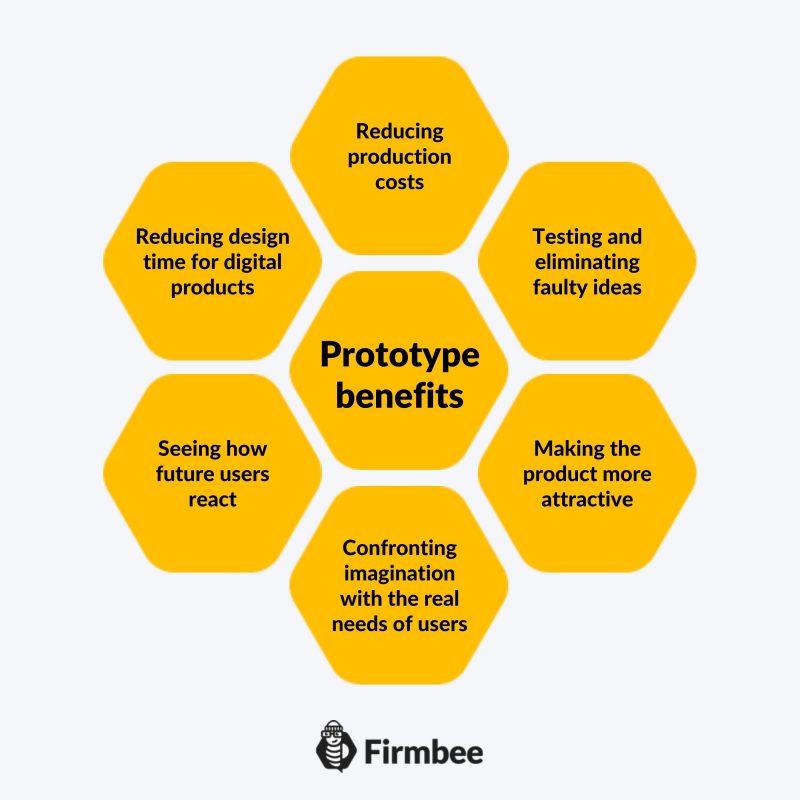Are you designing user experiences? A bare minimum of what your creation should do is to satisfy the most urgent needs of the users. But that is not great – that is just acceptable. Do you want your design to be great? We are sure you do! If that is so, it is time to think about more than just basic needs. Let’s take a look at a few things you should think of while designing a great experience.
Are you designing user experiences? – table of contents:
- The end-user of the product
- Prototyping
- Accessibility
- Simplicity & consistency
- Familiarity
- Uniqueness
- Security
- Preventing errors
- Details
The end-user of the product
The first and most important thing you should care about while designing the user experience – is the user. You are not designing for the sake of designing. Do not forget about the user part in the whole user experience.
If you intend to design a product that users will care about, it is a high time to learn what your audience desires. The user research is a crucial part of the UX design process.
If you want to design amazing things – you should know your users inside out. Many tools help to comprehend the nature of your target audience – for example, user personas and user journey maps.
Prototyping
One of the elements of a well-prepared design process is the stage of prototyping. Skipping this phase and going straight to building an actual product is a risky mistake. Prototyping helps in:
- Checking if the product fits into the market – having even the simplest prototype allows getting feedback from the target audience.
- Spotting issues early – you can smoothly spot errors that require quick fixes as they stop users from meeting their goals.
- Lowering the costs – the prototype is cheaper than the ready product but can provide you with the most necessary feedback.

Accessibility
This quality is all about enabling the users to use your product. Some users may have disabilities, and others may find some actions difficult – it is your responsibility to make using the product as easy and smooth as possible for everyone.
UX designers too often overlook a big part of their audience and suffer accessibility for visual attractiveness. Aesthetics are significant, but only if we have functional products.
Simplicity & consistency
A simple product means it is easy to understand and interact with it. Users should be able to use the product without any help. It is part of your job to make things clear and guide them where they need to get. The design must also be kept consistent. Extraordinary design decisions often cause confusion and frustration of users.
Familiarity
Humans tend to stick to what they are familiar with. Familiarity allows users to use new things faster, as the process is similar to their previous experiences.
Showing users elements they can recognize improves usability. Remember the limitations of human memory and the cost of cognitive energy to learn new things. It is always easier to recall than to remember.
Uniqueness
How to spot a good design? It is unique. Product heavily inspired it is not only risky because of the legal issues – it is not interesting for the users to get one another similar product. Uniqueness is the foundation of users’ interest and excitement.
Security
One of the main goals for a well-designed product and great UX is gaining the users’ trust. If the users are constantly worried about personal data – the experience is not great.

Preventing errors
Try to keep potential errors to a minimum level. Easier said than done, right? Sometimes errors happen because of users’ mistakes. Other times they happen because the product is faulty. Whatever is the real cause, in most cases you can prevent these errors.
You should eliminate misleading information provided to the user and always test your product before the launch.
Details
Remember why we started this list in the first place? You must fulfill the user’s wants and needs! The differences between an acceptable UX and exceptional UX are hidden in details.
We are talking about the little things contributing to the “wow” factor. An amount of your attention going to these little things will decide if the user will be in awe.
What details may be worth to look after? For example:
- tangible buttons,
- microcopy,
- usage of negative space,
- loading animations.
Summary
What does it take to make the user experiences outstanding? A positive user experience is one of the best techniques for gaining the interest and loyalty of customers. The key is the UX design process. There are things and rules that you cannot forget about while designing.
Follow our blog category “The ultimate UX Guide” so you don’t miss any of our next articles.
If you like our content, join our busy bees community on Facebook, Twitter, LinkedIn, Instagram, YouTube, Pinterest.
Author: Klaudia Kowalczyk
A graphic & UX Designer which conveys into design what cannot be conveyed in words. For him, every used color, line or font has a meaning. Passionate in graphic and web design.
The ultimate UX Guide:
- What is UX – and what it is NOT
- UX and UI – are they comparable?
- 7 factors of (outstanding) User Experience
- Do you know what UX Design means?
- Are you designing user experiences? Take care of these things!
- 10 usability heuristics for UX design you need to know
- The UX design process in 5 easy and simple steps
- User-centered design and its main principles
- Stages of User-Centered Design process
- What is Customer Experience?
- User Experience vs Customer Experience. A simple explanation of their relationship
- What is a Brand Experience?
- What is Human-Computer Interaction (HCI)?
- Why UX is important?
- Usability vs functionality in UX
- Examples of good UX design


















